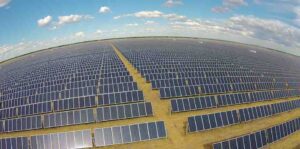New research has put to bed the repeated claims from some wind farm opponents that wind farms affect sleep either from audible noise or infra-sound.
Two papers from Flinders University researchers found that noise from wind farms does not affect sleep any more than traffic noises, and ‘realistic’ levels of very low frequency sound or infrasound can neither be heard by sleepers nor causes any signals in the brain.
While both wind farm noise and road traffic noise disrupt sleep a little, it depends on noise loudness and sleep depth at the time of noise exposure.
Flinders University sleep expert and the chief investigator Professor Peter Catcheside said that at its noisiest, road traffic noise was a little more sleep disruptive than wind farm noise.
The lack of brain activity when infrasound was played indicates that it’s unlikely to be behind noise complaints from wind farms.
“It suggests that other low frequency audible rumbling and thumping components deserve more attention towards better understanding wind farm noise effects on sleep,” he said.
The papers were presented at the International Conference on Wind Farm Noise in Dublin, and while the data is still to be peer-reviewed, it builds on a growing body of research that indicates wind farm noise doesn’t affect sleep.
A similar study was published by sleep researchers at the Woolcock Institute in March, which looked at the health effects of infrasound and wind farm noise. It found no effect from three days of infrasound exposure to a range of health indications, from sleep, blood pressure, balance and hearing.
Five years and 460 nights
The two new Flinders University papers are part of a five-year study and showed that short exposure to wind farm and road traffic noises wake a small number of people, and very low frequency infrasound produced no evidence of sleep disruption.
The project involved over 460 sleep study nights from 68 participants, and included people living near a wind farm with and without noise related sleep difficulties, a group of residents living near a busy suburban road and people living in quiet rural areas, who each spent seven consecutive nights in the sleep laboratory.
The road noise study played 20-second wind farm and road traffic noise samples repeatedly during participants’ sleep using three different sound pressure levels to compare their sleep disruption responses between the two different noise types.
On a different night, the study tested if longer three-minute noise samples, including very low-frequency wind farm infrasound alone, resulted in sleep disturbance.
The studies used noise samples captured from long-term measurements of wind farm noise, and replicated for the study’s participants in a lab. Sleep measurements were taken using electroencephalography (EEG) which measures brain activity while asleep.
“We became aware of public concerns and complaints around sleep disruption and annoyance around wind farm noise, as wind farms have expanded substantially in Australia and globally,” Catcheside told RenewEconomy.
“We thought it was legitimate to establish whether wind farm noise is different [to that created by traffic].”
What the research, some of which is still to be published, doesn’t answer yet is how well people are able to get to sleep in the presence of wind farm noise.










